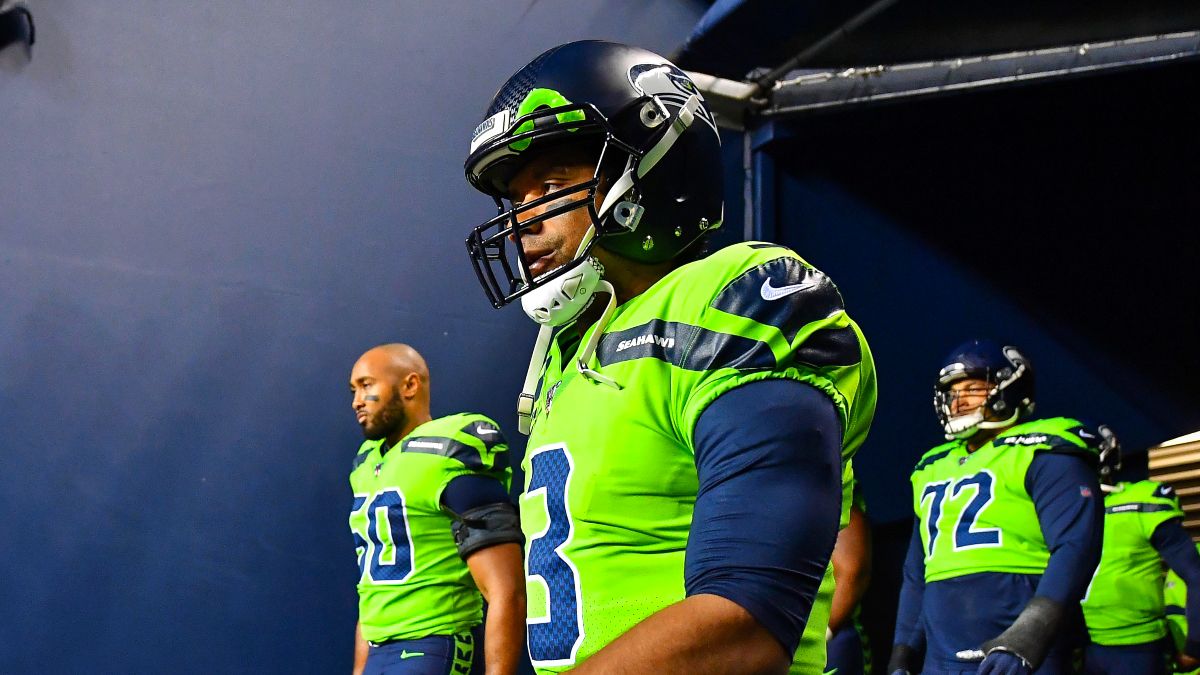Run Line Nfl
Remember when the Broncos, in the late 90’s, could seemingly run any running back out there and he would rush for a thousand yards a season? That was the advent of the great schism in offensive line philosophies – Zone and Man (or Angle). In lockstep with many of the Genus and Species type confusions on how things are named in modern football, it is better to describe why a new philosophy was born and to identify the essential core differences between the two blocking concepts.
Offensive line play was fundamentally fairly simple until the zone concept developed in the 90’s- essentially it boiled down to “beat the big guy in front of you.” Consider Hall of Fame offensive lineman Russ Grimm’s Hall of Fame quote: “…there’s no greater feeling than to be able to move a man from Point A to Point B against his will.” Let’s simplify things and say that all in all, that was the general approach of offensive linemen until the zone idea came along.
/cdn.vox-cdn.com/uploads/chorus_image/image/66166432/usa_today_13932517.0.jpg)

The line was protected by the new scheme just enough, and much of the pressure the Cardinals faced as a team came from quarterback Kyler Murray, who was charged with 42 pressures and 23 sacks on his own. Overall, the Cardinals finished with the ninth-best pass-blocking grade but the ninth-worst run-blocking grade among NFL teams. Defensive backfield, 20 yards behind the LOS toward the same side of the field as the line judge; General Responsibilities. Watches receiver split widest on nearest side of the field for illegal use of hands and blocking fouls, and for penalties on defensive back covering him. Counter plays require linemen who can run, and also block with authority. The design is again fairly simple. Frontside linemen block down toward the backside, but instead of just a guard pulling. Note: The yard line 19 yards from Team A’s goal line is called A’s 19-yard line. The yard line 51 yards from A’s goal line is called B’s 49-yard line. For brevity, these are referred to as A’s 19 and B’s 49 or A19 and B49. SECTION 13 - FORWARD PROGRESS ARTICLE 1. FORWARD PROGRESS.
In the mid 90’s, Alex Gibbs put in a zone blocking scheme for the Denver Broncos. Offensive lines were having a very difficult time with all of the zone blitzing of 3-4 defenses, and the stunts of 4-3 defenses. It was extremely difficult to figure out who was blitzing, who was dropping into coverage, and who was just maintaining their gaps. So, Gibbs essentially said forget it… we will dictate how we block by not worrying about where defenders are and we will have the offensive line all move as a unit.

You can easily identify when a team is using the zone blocking scheme, it almost seems like all five guys are just one synchronized marionette moving in one direction. They have a series of “steps” that they all will do where each man is occupying a “zone.” Running backs basically didn’t have to think or react… they had a very specific assignment to follow. There is no true “hole” to run through, simply a point of attack as the linebackers are displaced by the shift of the offensive linemen.
The contrast to that is the traditional “Man” or “Angle.” This is, to simplify, an approach where the offensive linemen have real person assignments to block, and are not just blocking a specific area. In the Angle blocking scheme you will see the pulling guard used to release and move down the line to lead block for a running back.

The Zone offensive scheme thrived tremendously, utilizing smaller but more agile offensive linemen. Angle schemed offensive linemen were generally bigger and stronger. The Zone scheme was difficult for defenses to adjust to until a few teams figured out how to capitalize on the undersized linemen.
Run Line Nfl
Now, before you get too comfortable, there is a third option… The “Gap” blocking scheme. Gap blocking essentially is a hybrid of Man/Angle and Zone. A gap blocking scheme involves the linemen blocking players in the “gaps” to either side of him. A guard might pull through to create a hole for a running back.
Run Line Nfl Picks
Today, teams will generally have a concept that they prefer, which allows them to pursue players that best fit for the system. And some teams have started to use big, physical lineman that you would generally use in the Angle scheme and use a lot of zone concepts. The general idea is to not get too locked into either scheme so that defenses can lock down on the weakness of either.
For the draft, it is important to know what your team prefers to run. In general, zone teams can wait later in the draft for offensive linemen, as there are many “smaller” offensive lineman playing in the spread that can operate effectively in the a zone scheme. However, never be surprised when a team goes after that super-premium left tackle early in the draft. When a team has a left tackle that is both big and agile, it allows the team to mix up schemes within the game, allowing them to dictate the run game.
Run Line Nfl Games
Explanation of Contrast between Basic Zone and Man Concepts:
Nfl Run Line Betting
The new European data protection law requires us to inform you of the following before you use our website:
We use cookies and other technologies to customize your experience, perform analytics and deliver personalized advertising on our sites, apps and newsletters and across the Internet based on your interests. By clicking “I agree” below, you consent to the use by us and our third-party partners of cookies and data gathered from your use of our platforms. See our Privacy Policy and Third Party Partners to learn more about the use of data and your rights. You also agree to our Terms of Service.